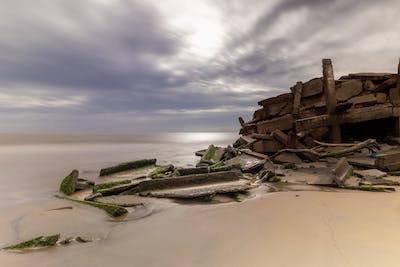Hurricane Lee: A Force of Nature’s Fury
Hurricane Lee, a powerful tropical cyclone, made its mark on the Atlantic basin in the late summer of 2017. While not as widely covered or as destructive as some of its infamous counterparts, Hurricane Lee served as a reminder of the immense forces at play in our planet’s atmosphere. This essay will delve into the characteristics, formation, impacts, and the importance of understanding and monitoring such natural disasters as Hurricane Lee.
Hurricane Lee, which formed as the twelfth named storm of the 2017 Atlantic hurricane season, originated from a tropical wave that emerged off the west coast of Africa. It underwent several phases of development, intensifying and weakening multiple times as it traversed the Atlantic Ocean. This variability is not uncommon for tropical cyclones, as they are influenced by various atmospheric and oceanic factors. Lee, like other hurricanes, thrived in the warm waters of the Atlantic and Gulf of Mexico, where it gained strength before its eventual transformation into a hurricane.
II. Characteristics and Intensity
At its peak intensity, Hurricane Lee reached Category 3 on the Saffir-Simpson Hurricane Wind Scale, with sustained winds of up to 115 miles per hour. Its rapid intensification demonstrated the dynamic nature of these storms, which can change from mild disturbances to deadly hurricanes within a matter of days. The distinctive eye of Hurricane Lee, a relatively calm and clear area at the center of the storm, is a hallmark feature of mature hurricanes.
Although Hurricane Lee did not make landfall in populated areas, it had notable impacts on the open ocean and some remote islands. Its strong winds and high waves posed significant risks to maritime interests, including shipping and offshore operations. In addition, the cyclone’s outer bands brought heavy rains and gusty winds to the Azores, a remote archipelago in the North Atlantic, leading to localized flooding and power outages.
Hurricanes like Lee underscore the importance of preparedness and early warning systems. While it spared populated areas in this instance, it serves as a stark reminder of the potential devastation that these storms can bring to coastal communities. Understanding their characteristics and having effective disaster management plans in place are crucial for minimizing loss of life and property.
The tracking and monitoring of hurricanes have significantly improved over the years, thanks to advances in meteorological technology and research. Satellites, weather buoys, and computer models allow meteorologists to closely monitor the development and movement of these storms, providing valuable information for decision-makers and the public alike. The National Hurricane Center (NHC) in the United States plays a pivotal role in disseminating accurate and timely information about hurricanes, helping communities prepare and respond to these natural disasters.
Furthermore, research into hurricane formation, intensification, and behavior is ongoing. Scientists study the complex interplay between atmospheric conditions, sea surface temperatures, and other factors that influence hurricane development. This knowledge contributes to better forecasting and a deeper understanding of how climate change may impact the frequency and intensity of hurricanes in the future.
Hurricane Lee, though not as catastrophic as some of its predecessors, served as a reminder of the relentless power and unpredictability of nature. Its formation, development, and impacts highlighted the importance of monitoring and research in our ongoing efforts to mitigate the risks associated with hurricanes. As the world faces the challenges of a changing climate, understanding and preparing for these natural disasters will remain critical in protecting both human lives and the environment. Hurricane Lee, like all hurricanes, stands as a testament to the need for vigilance, resilience, and the pursuit of knowledge in the face of nature’s fury.




